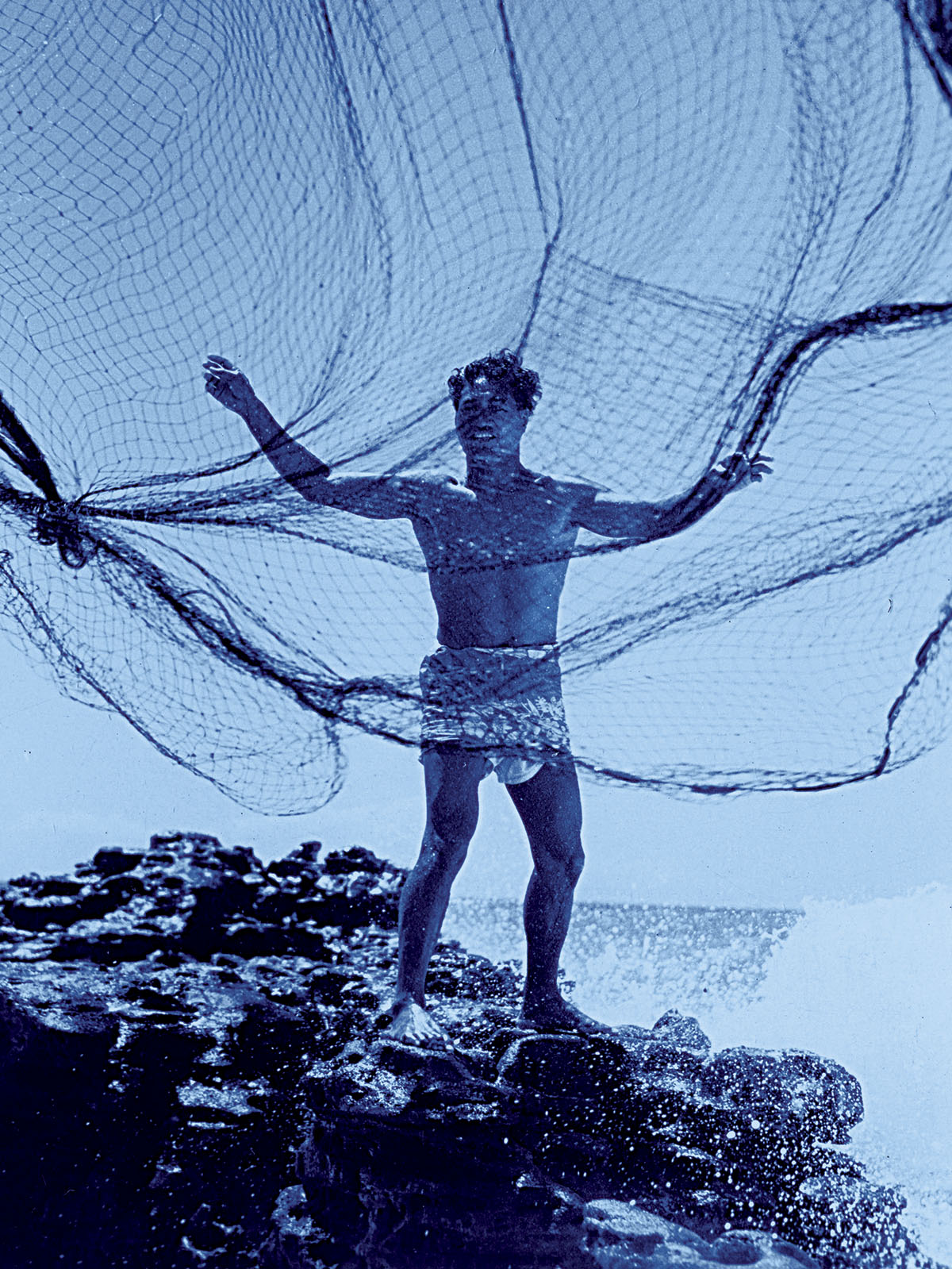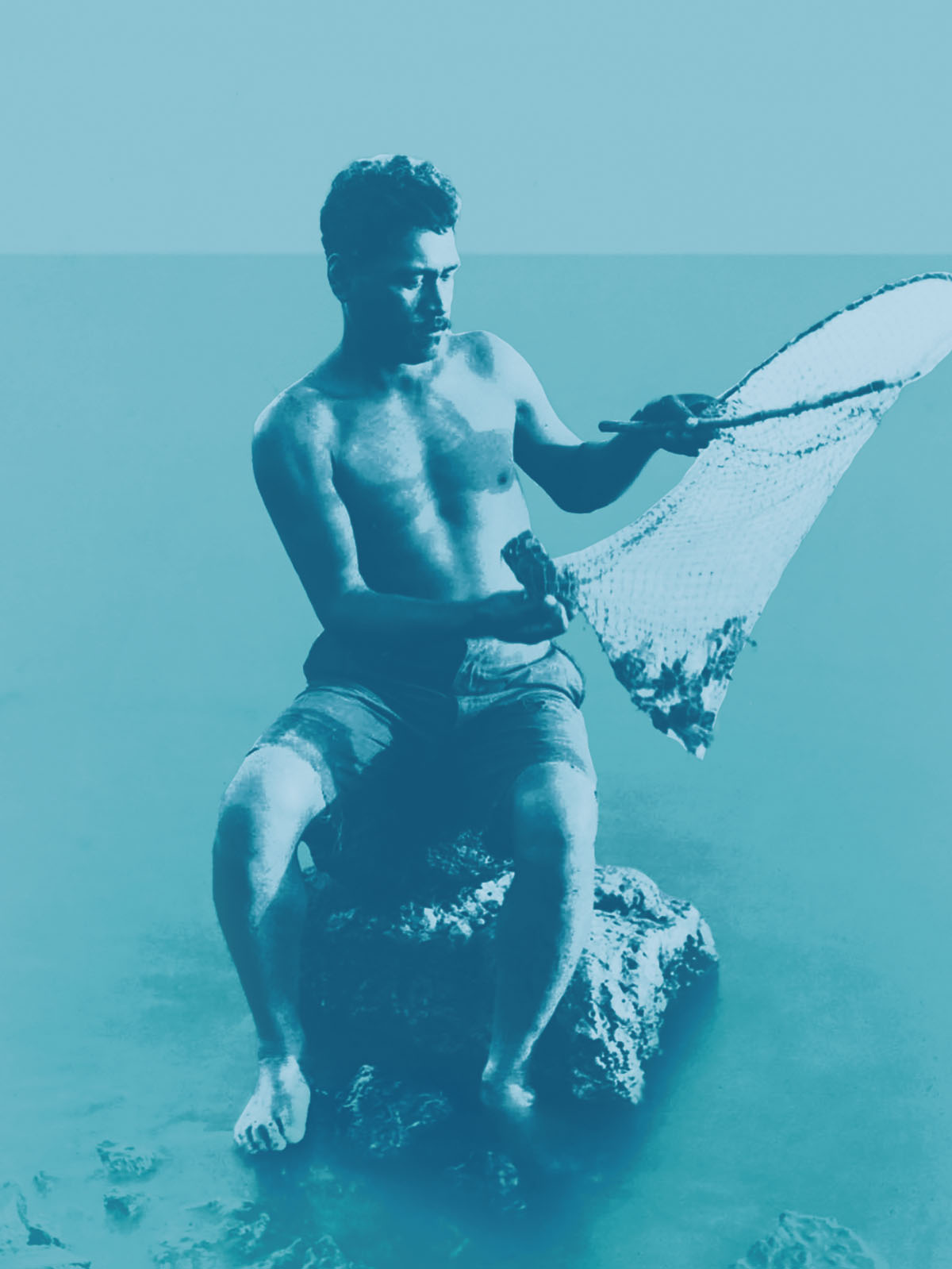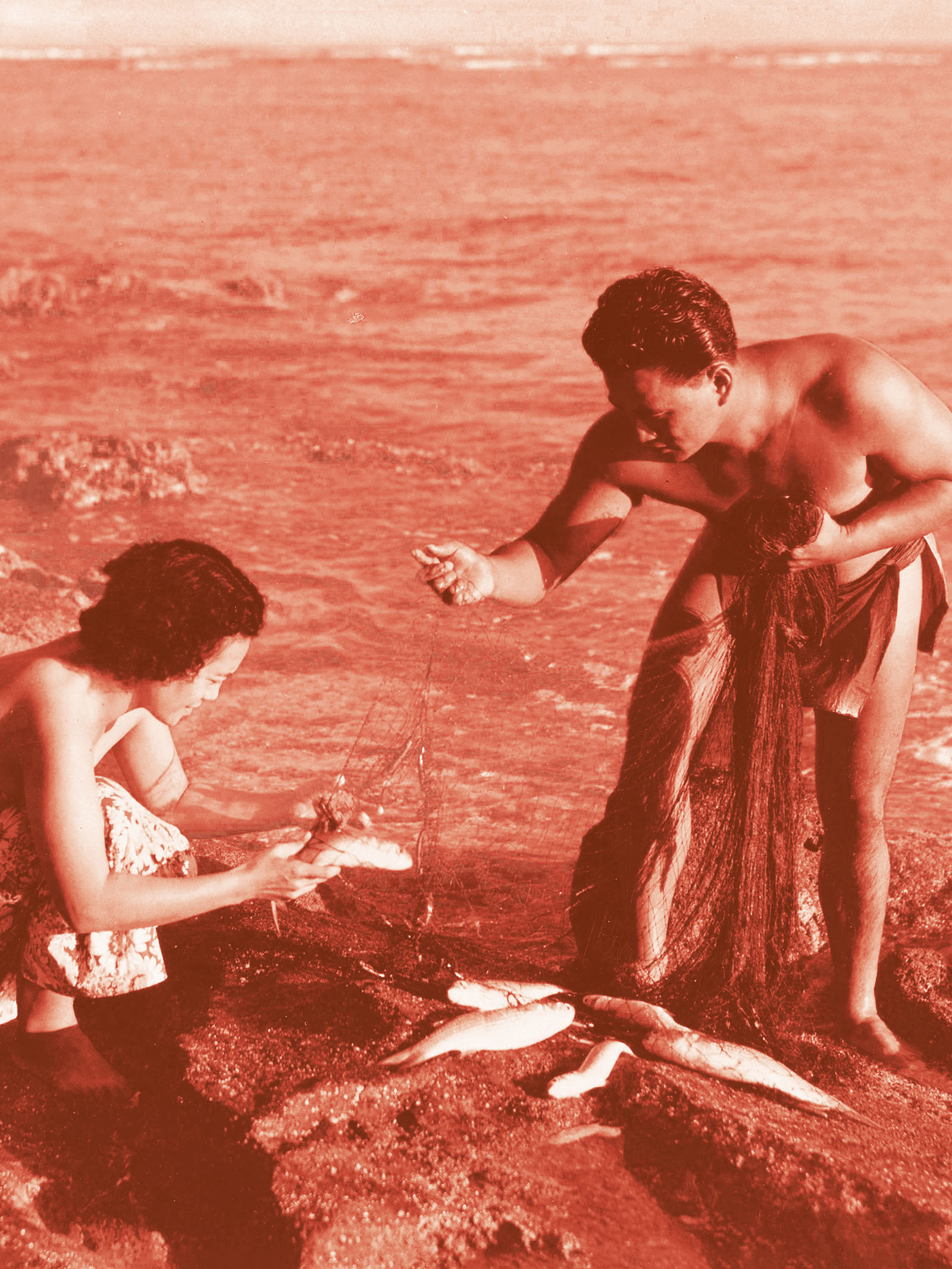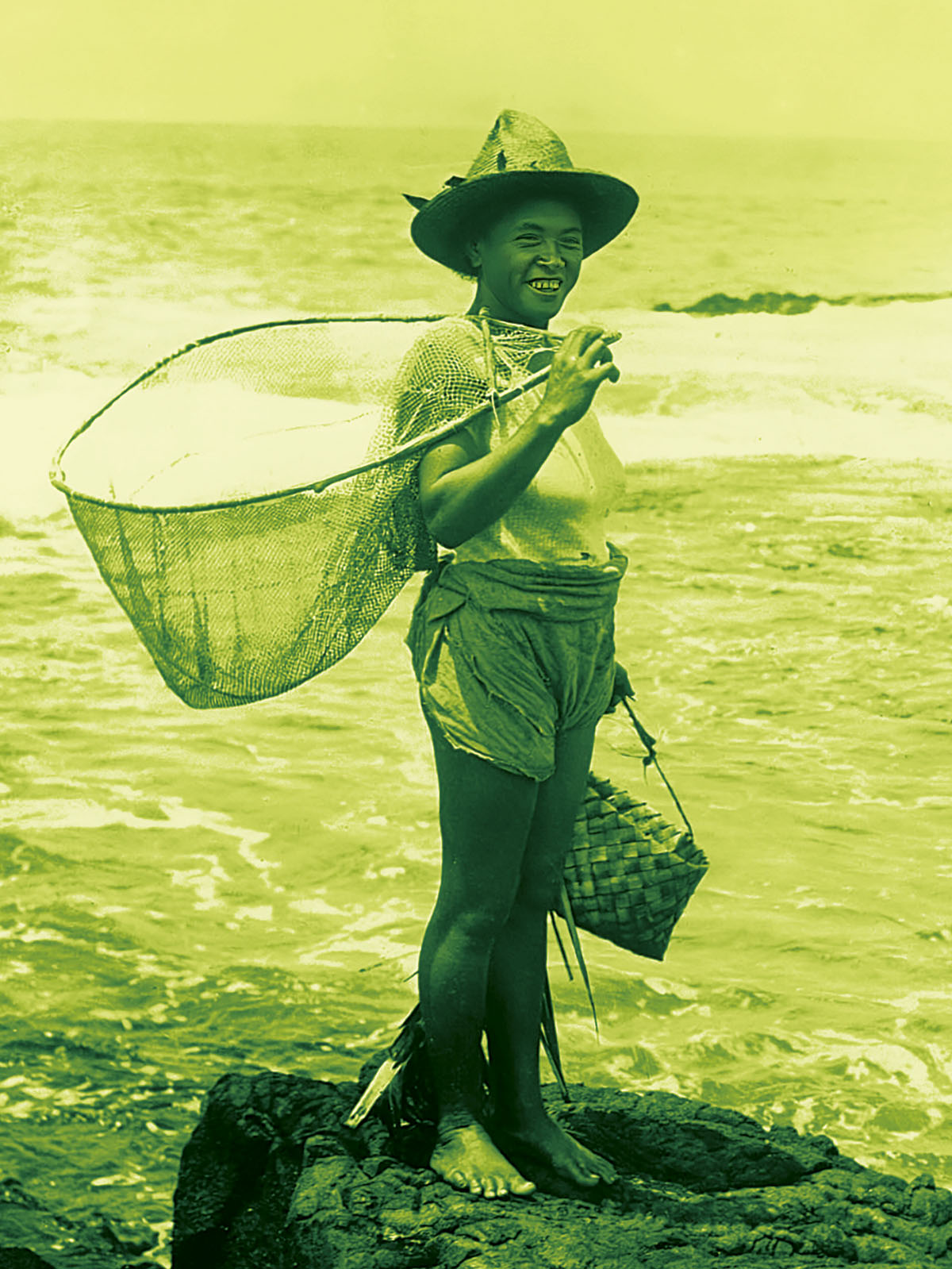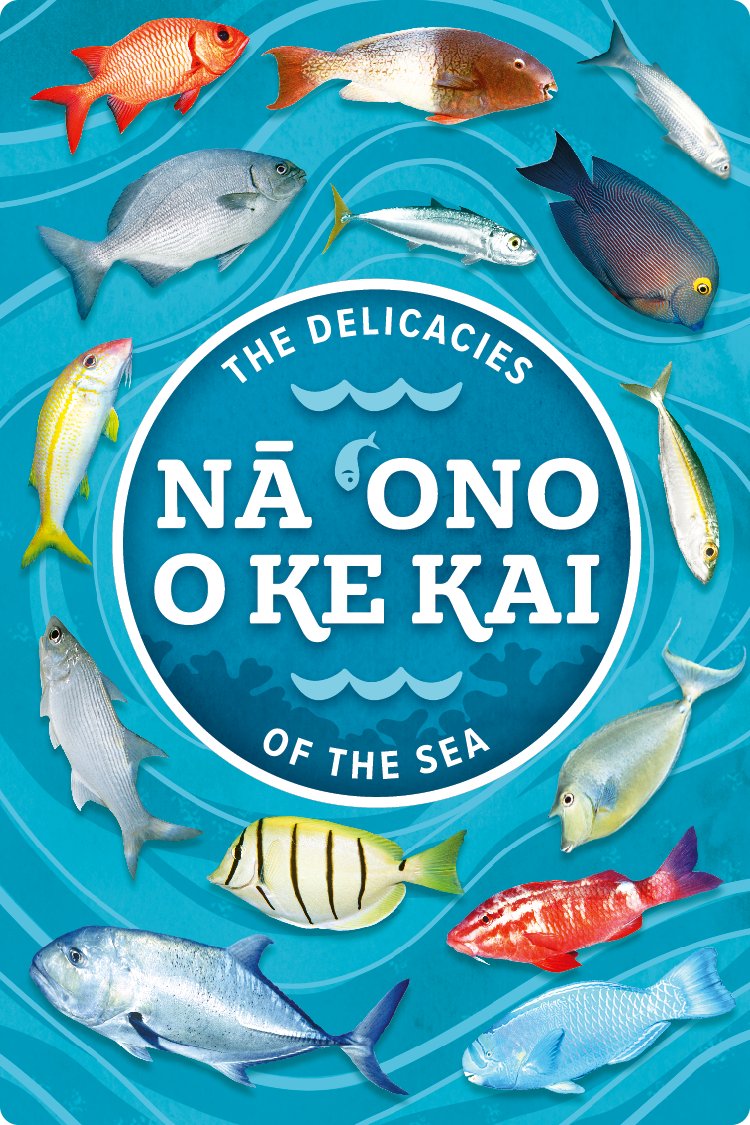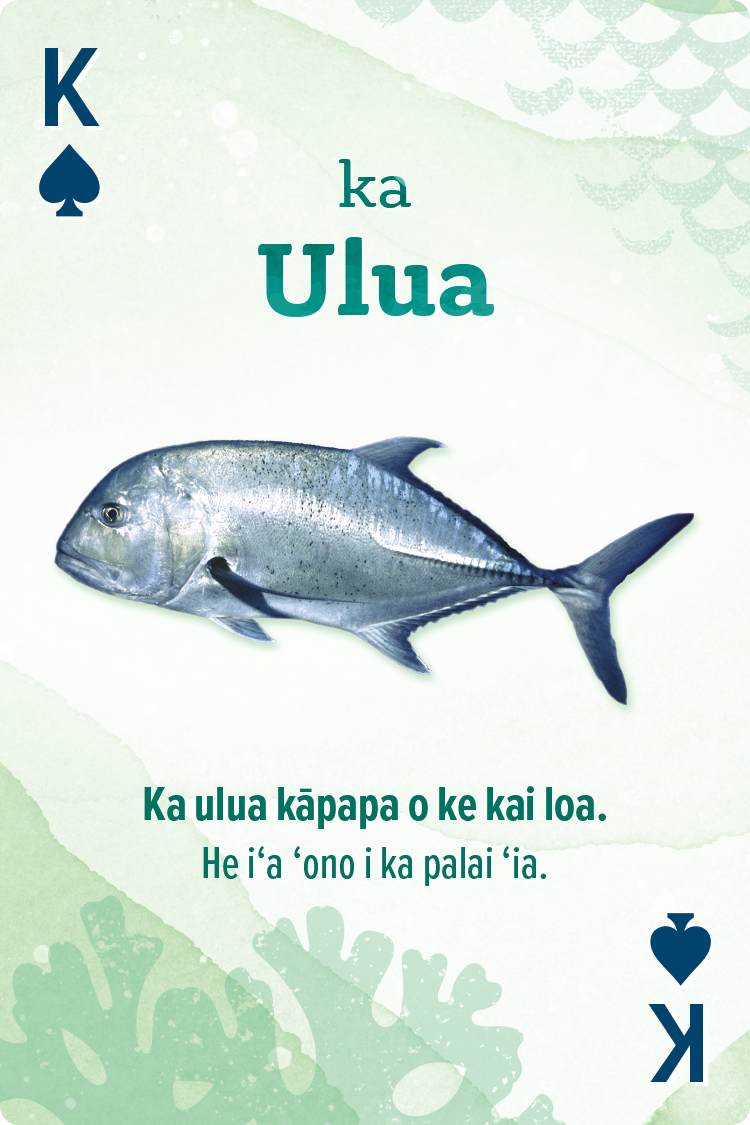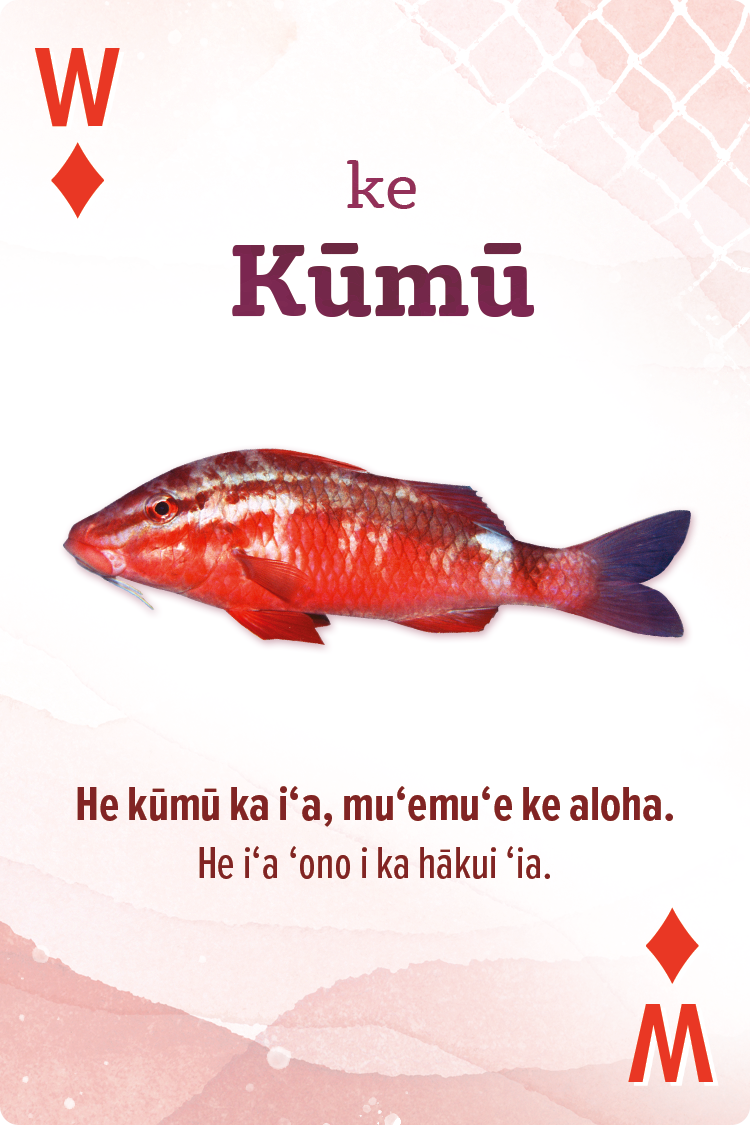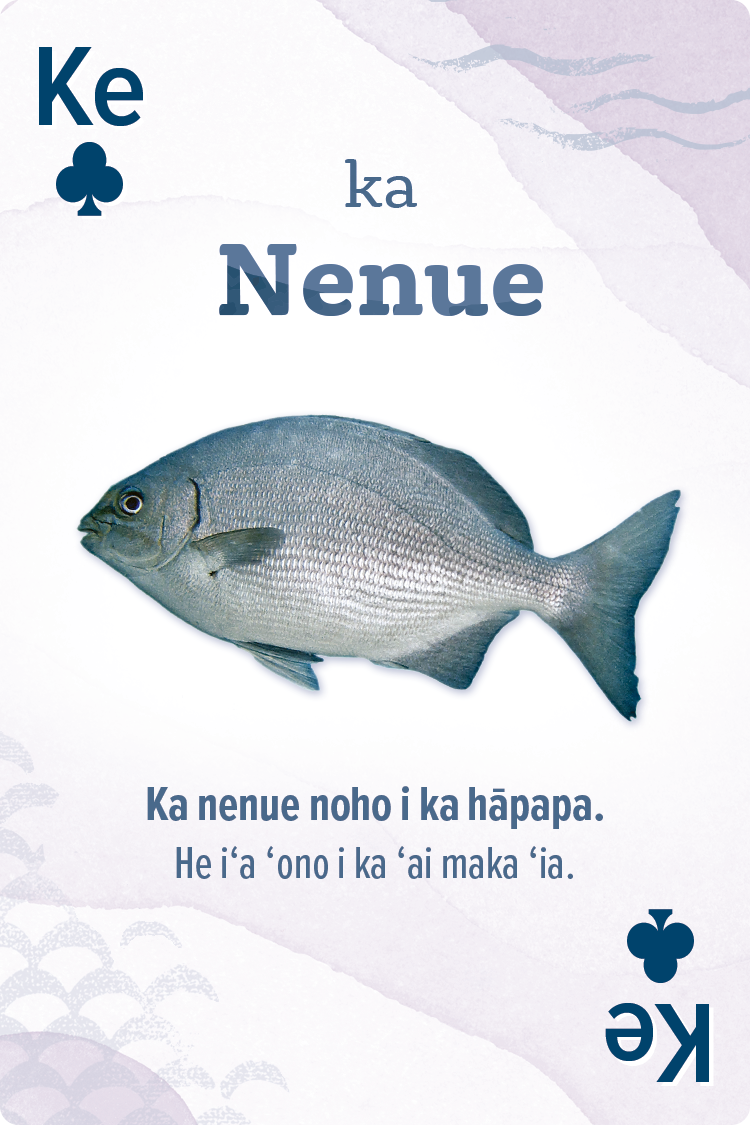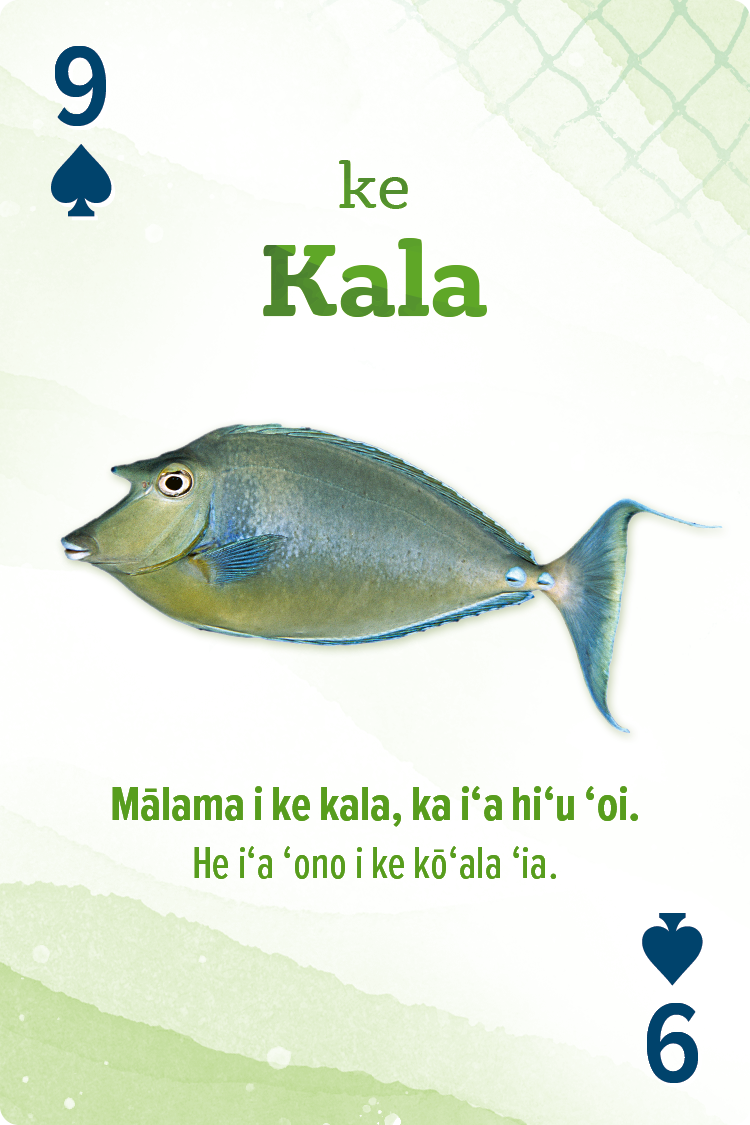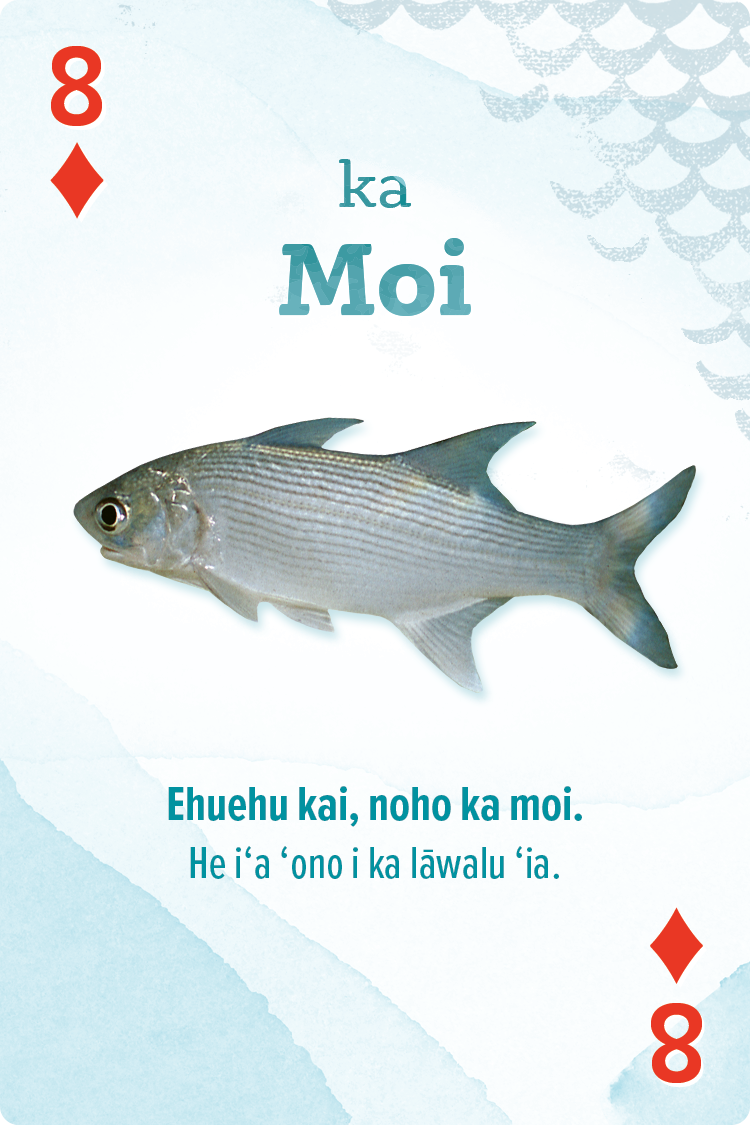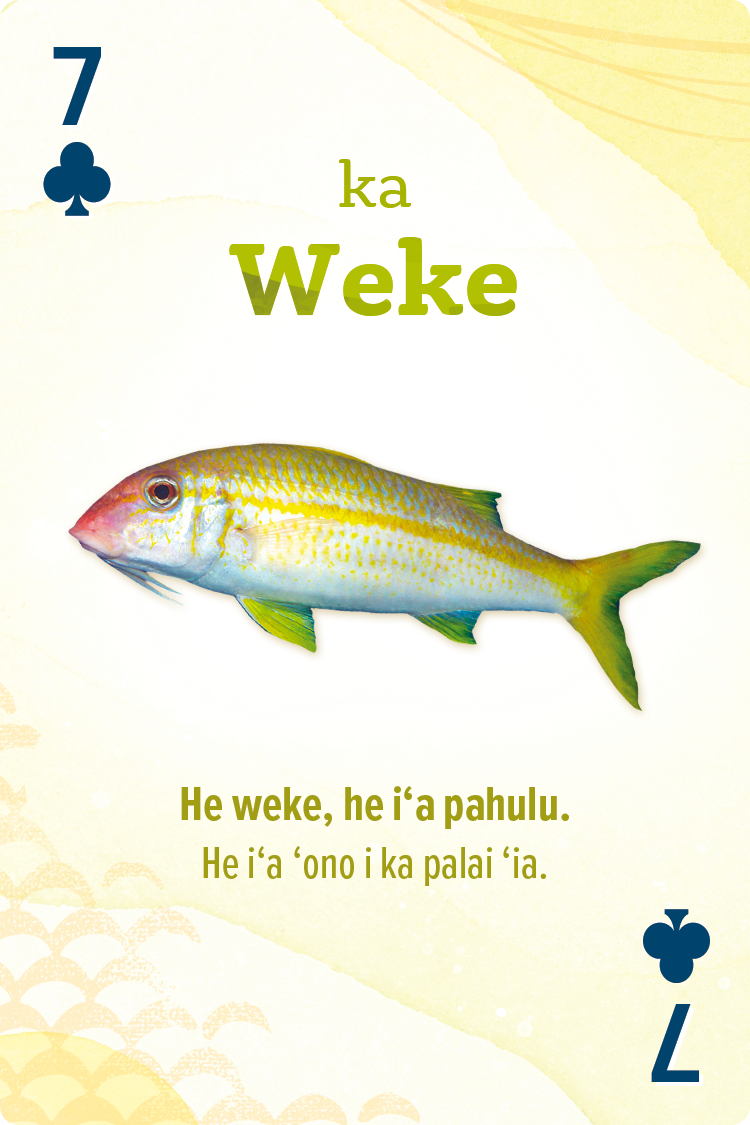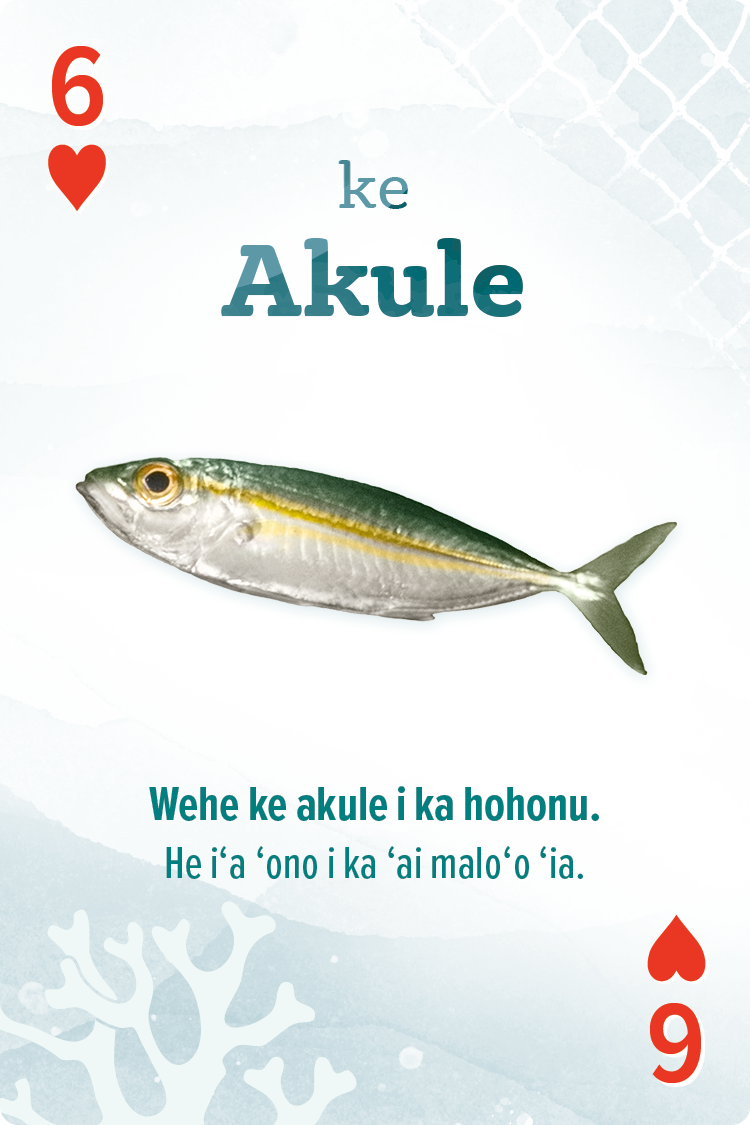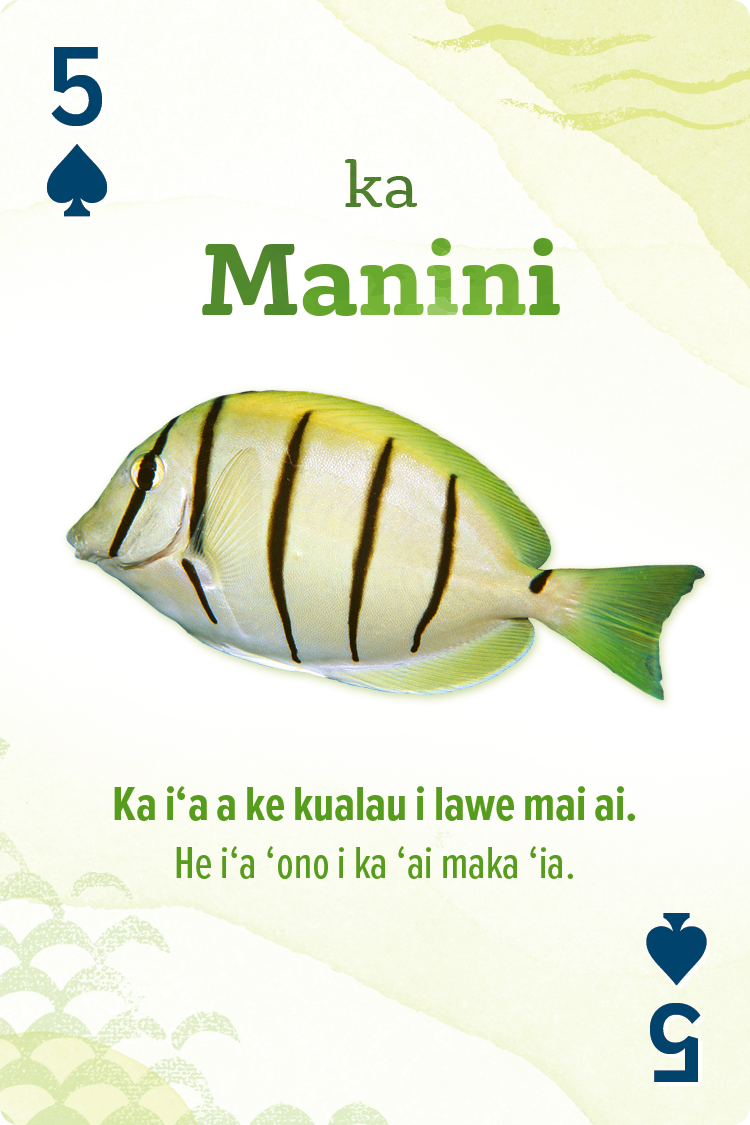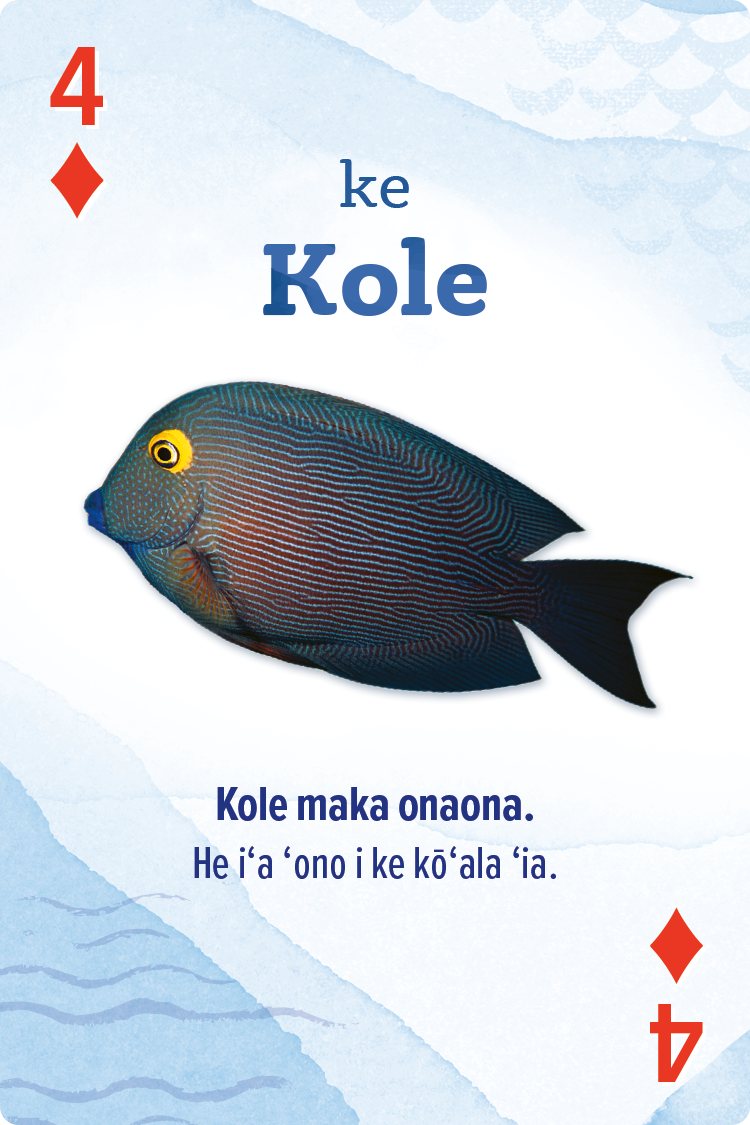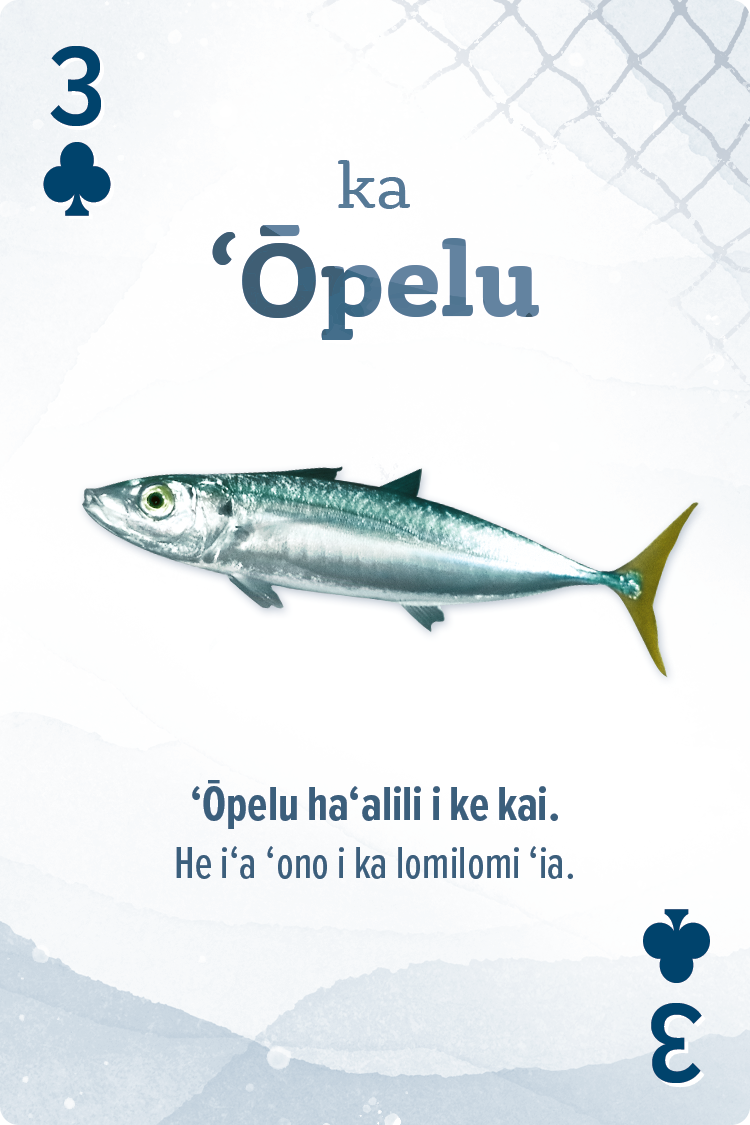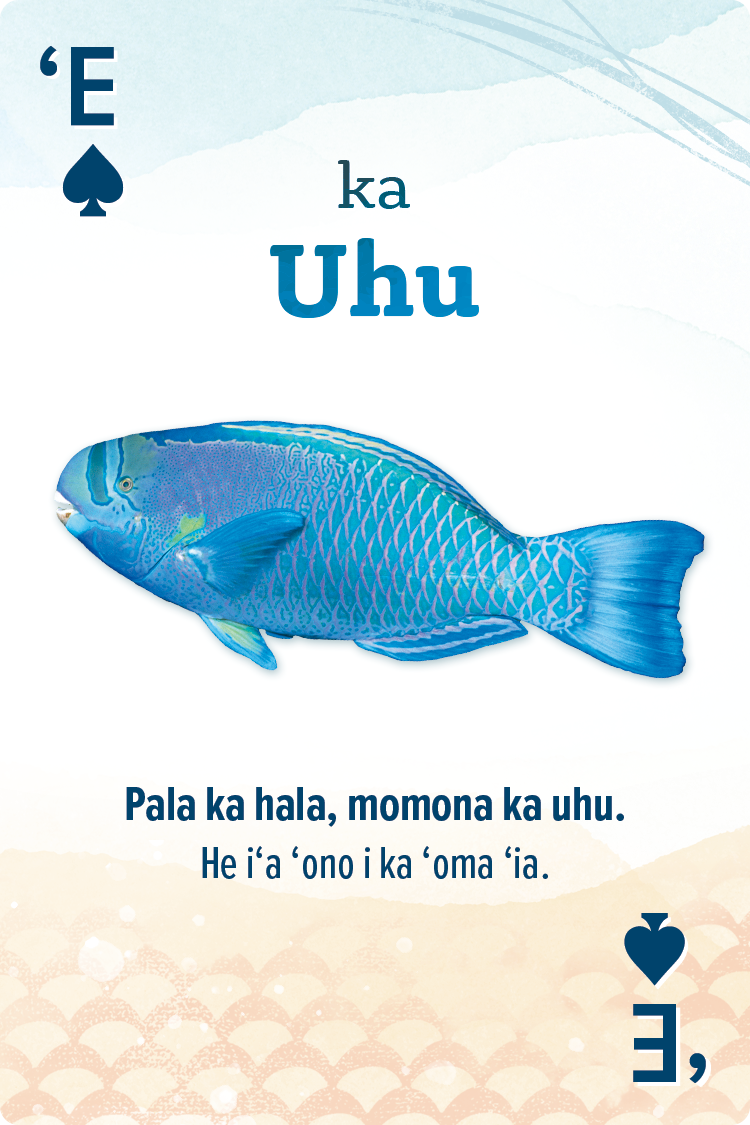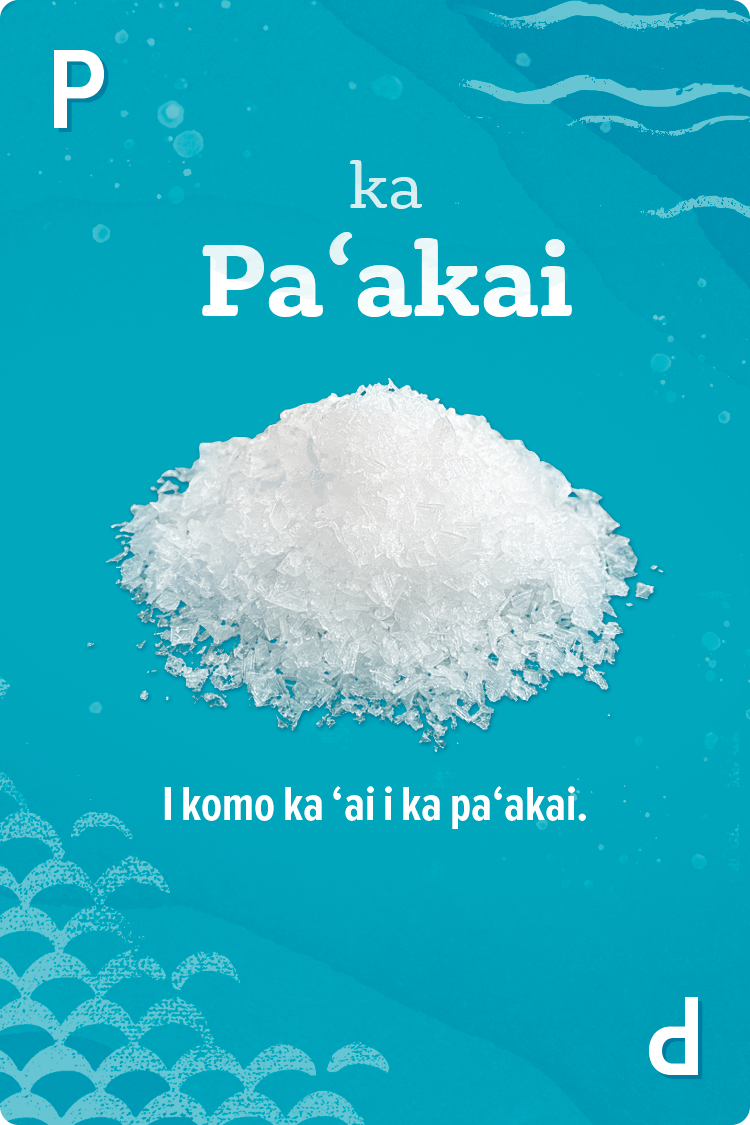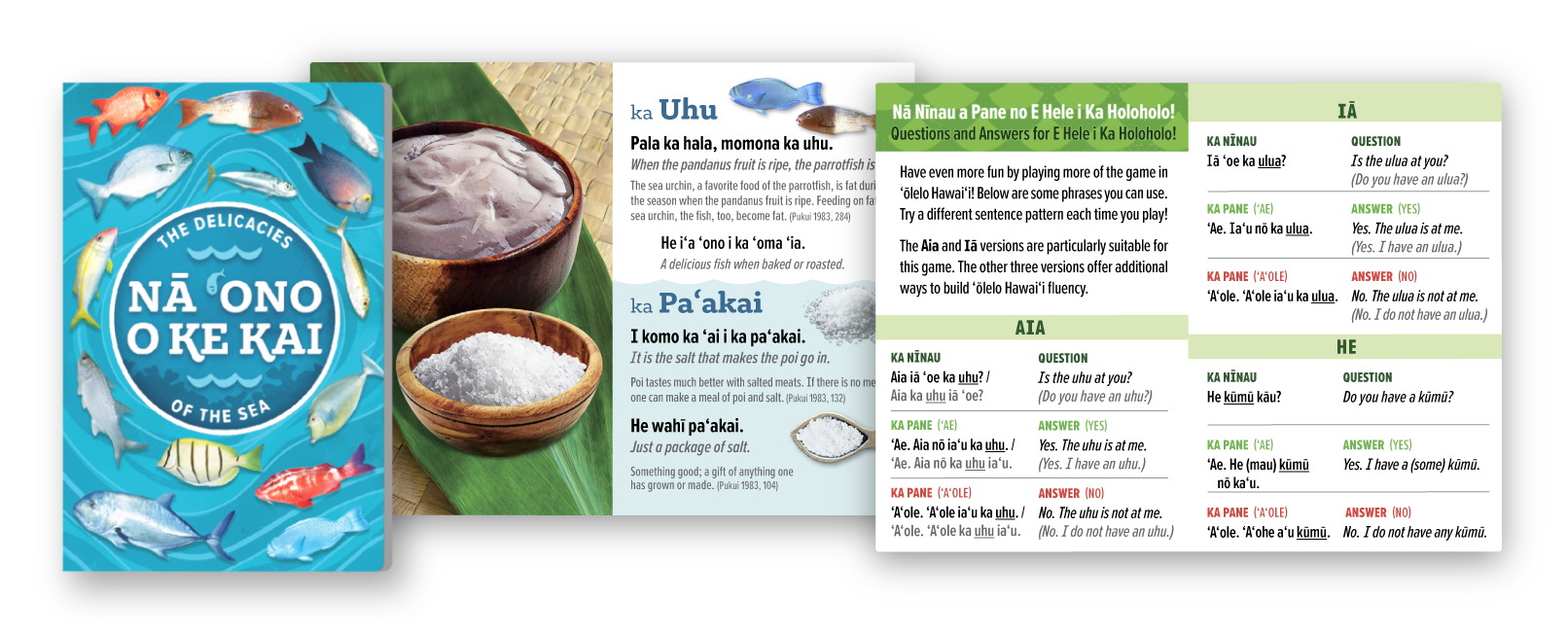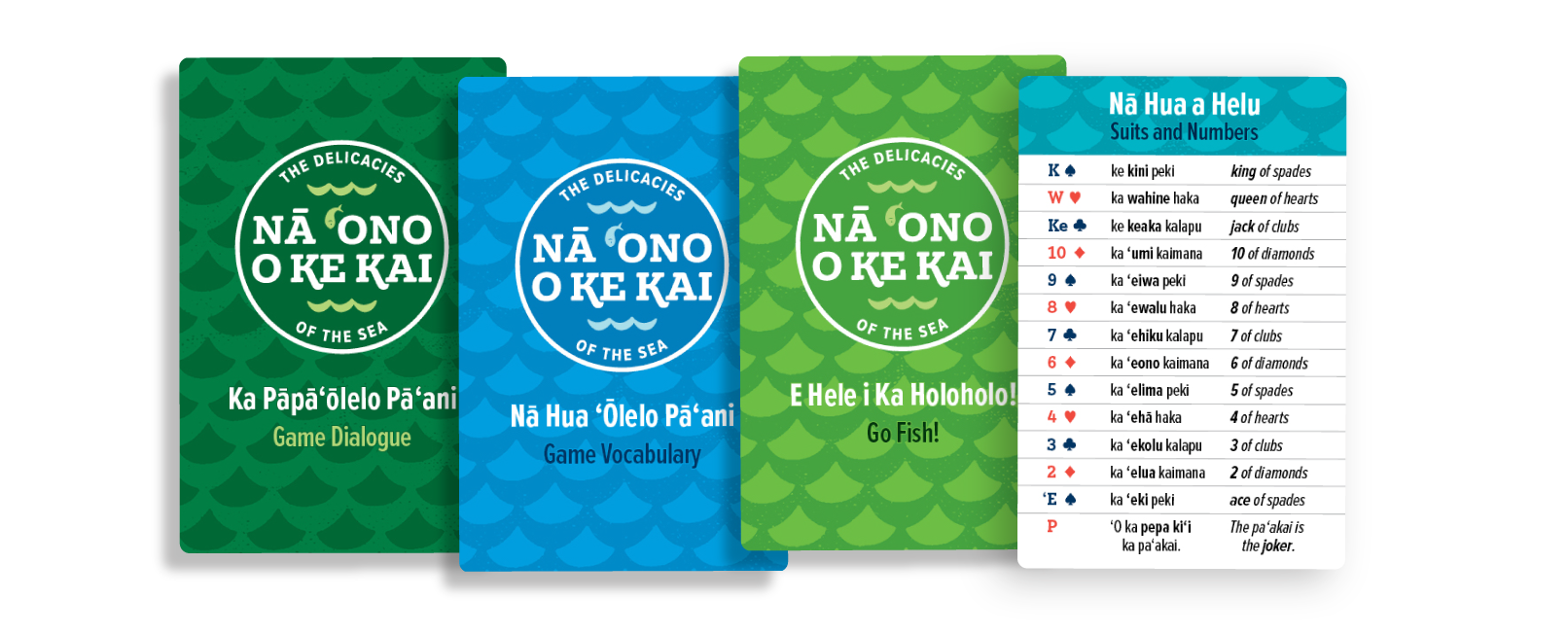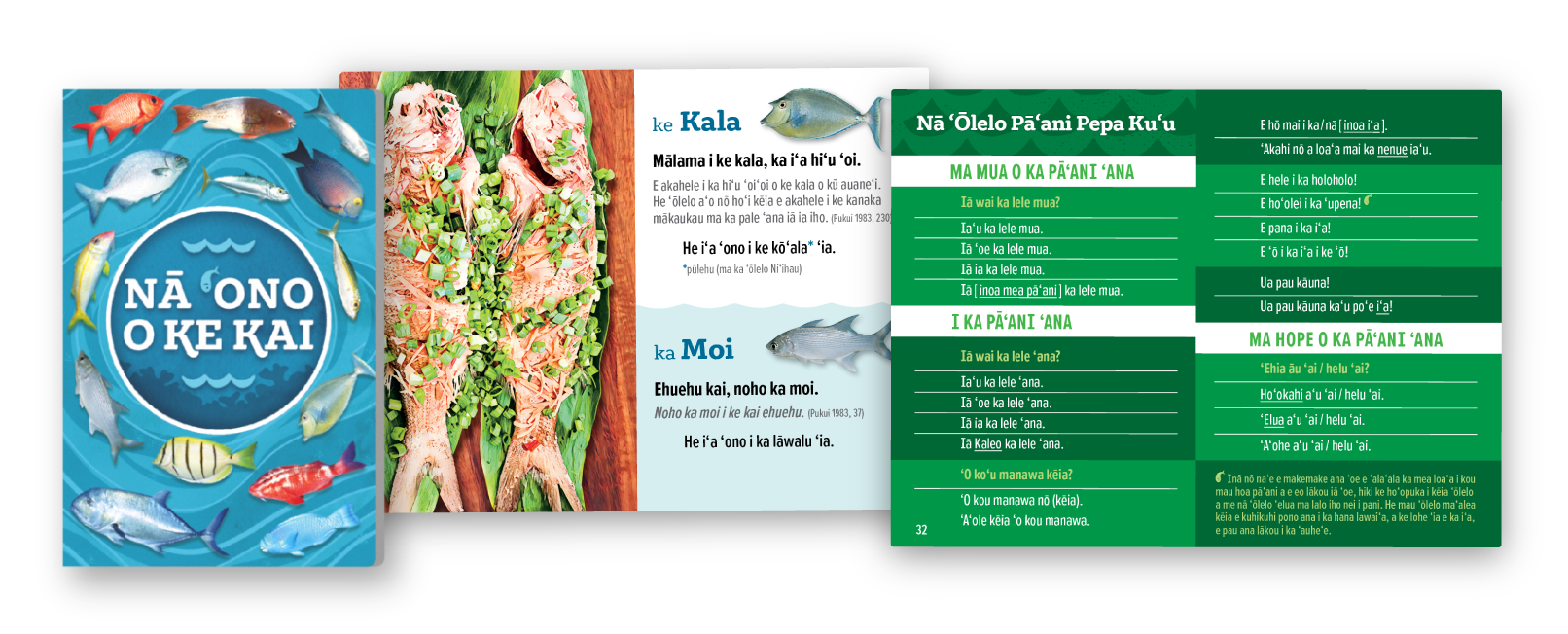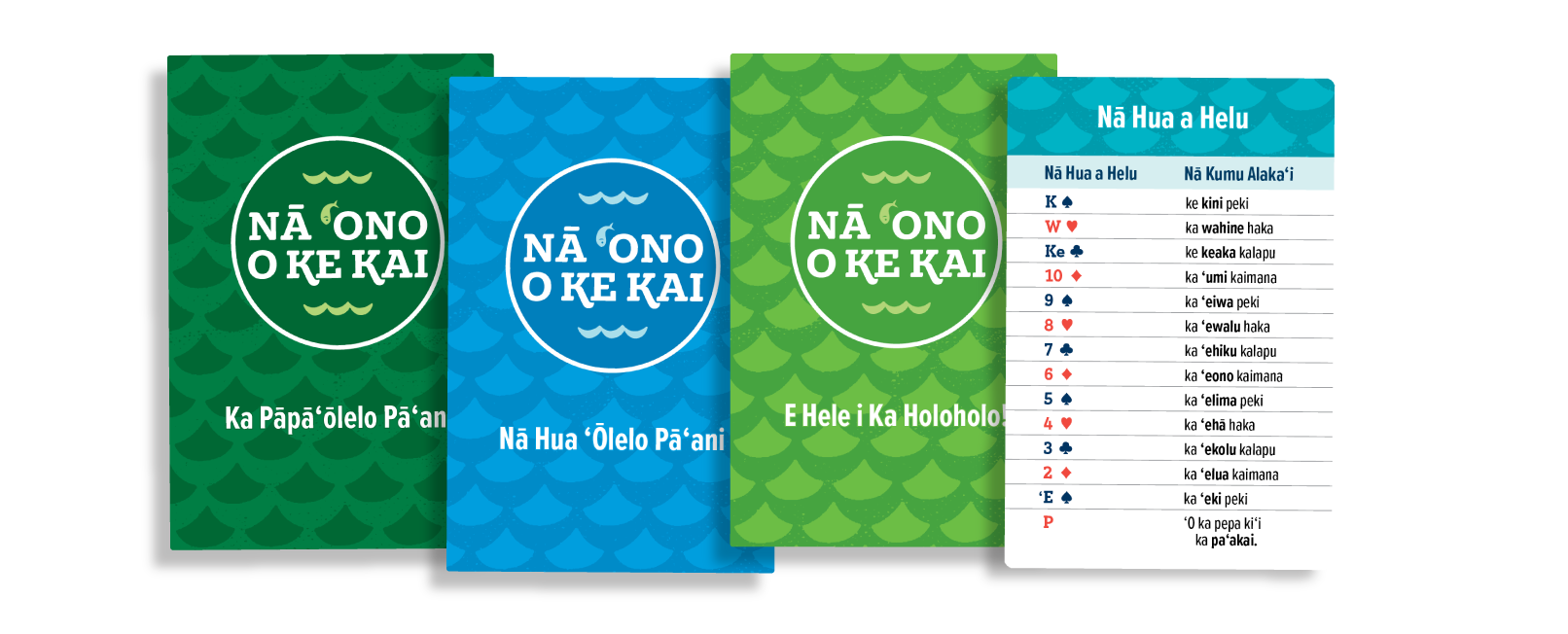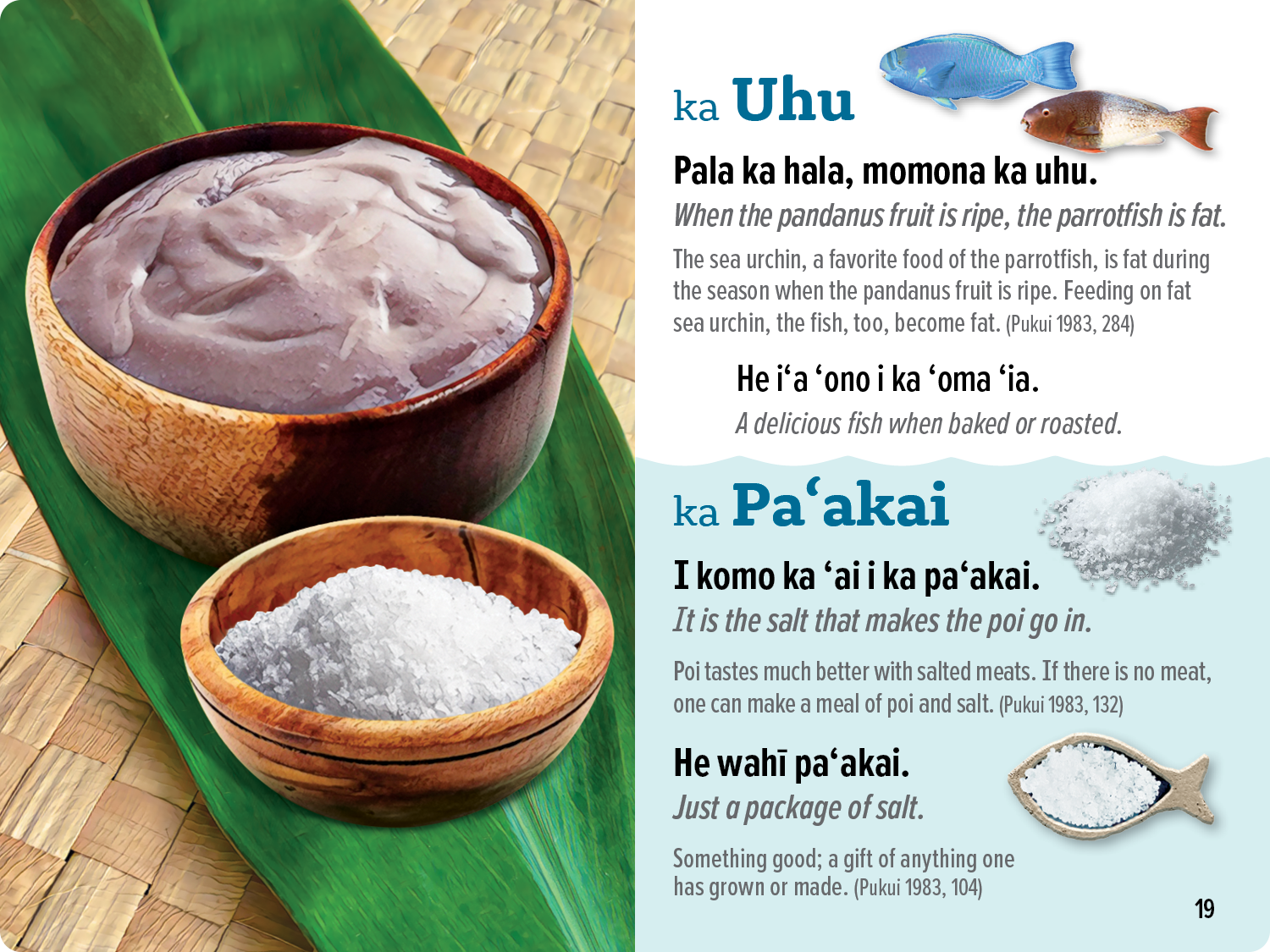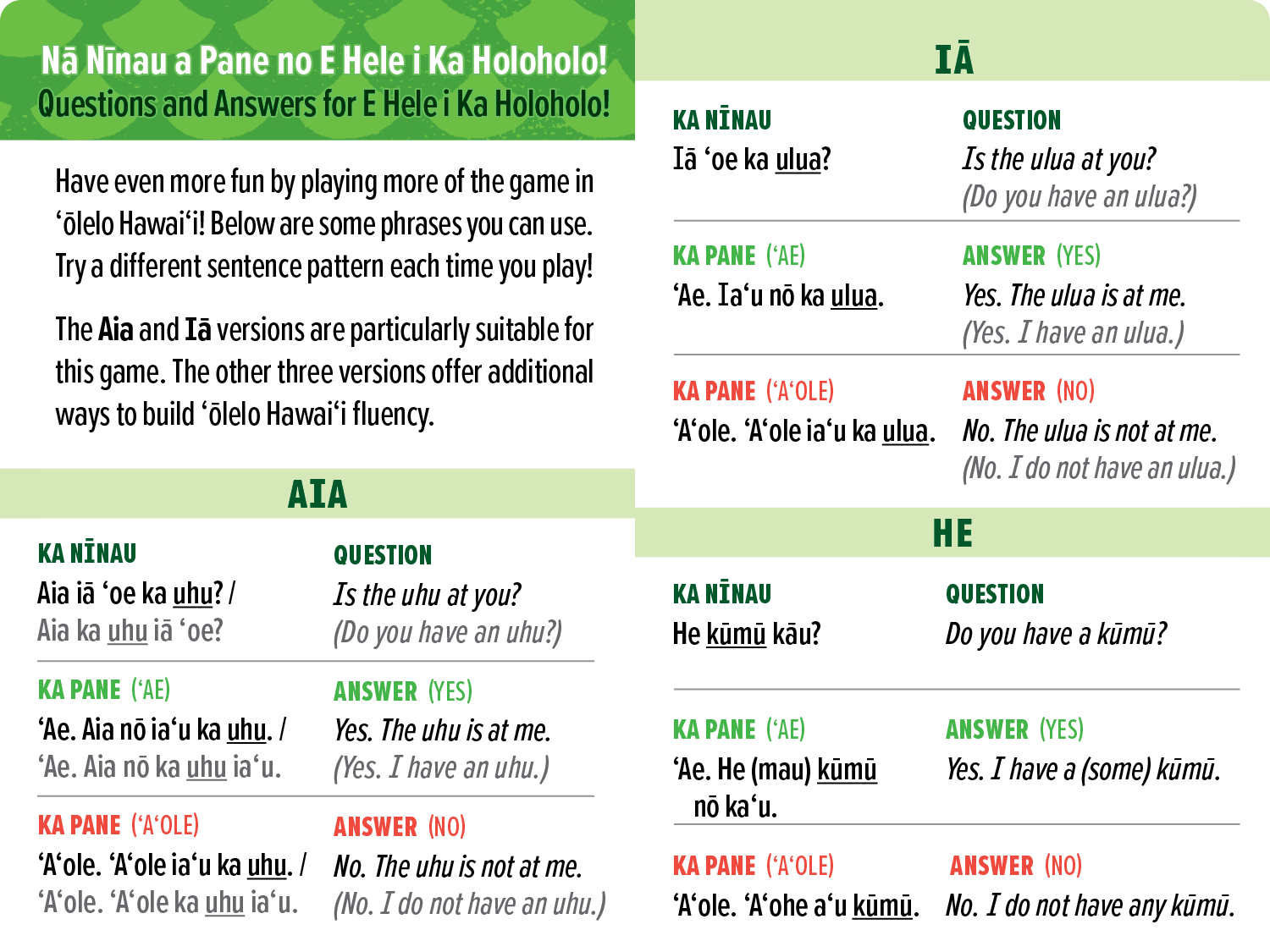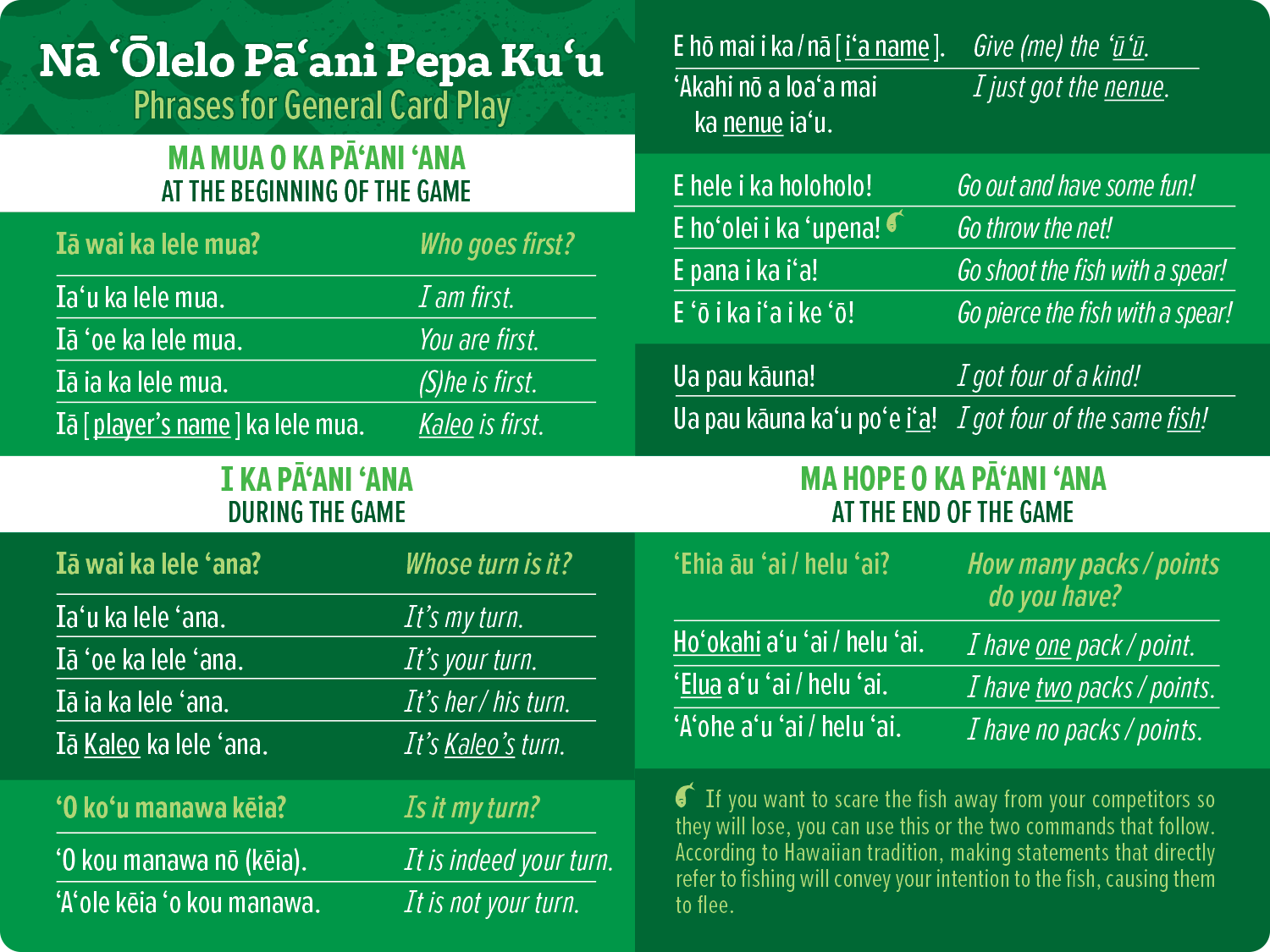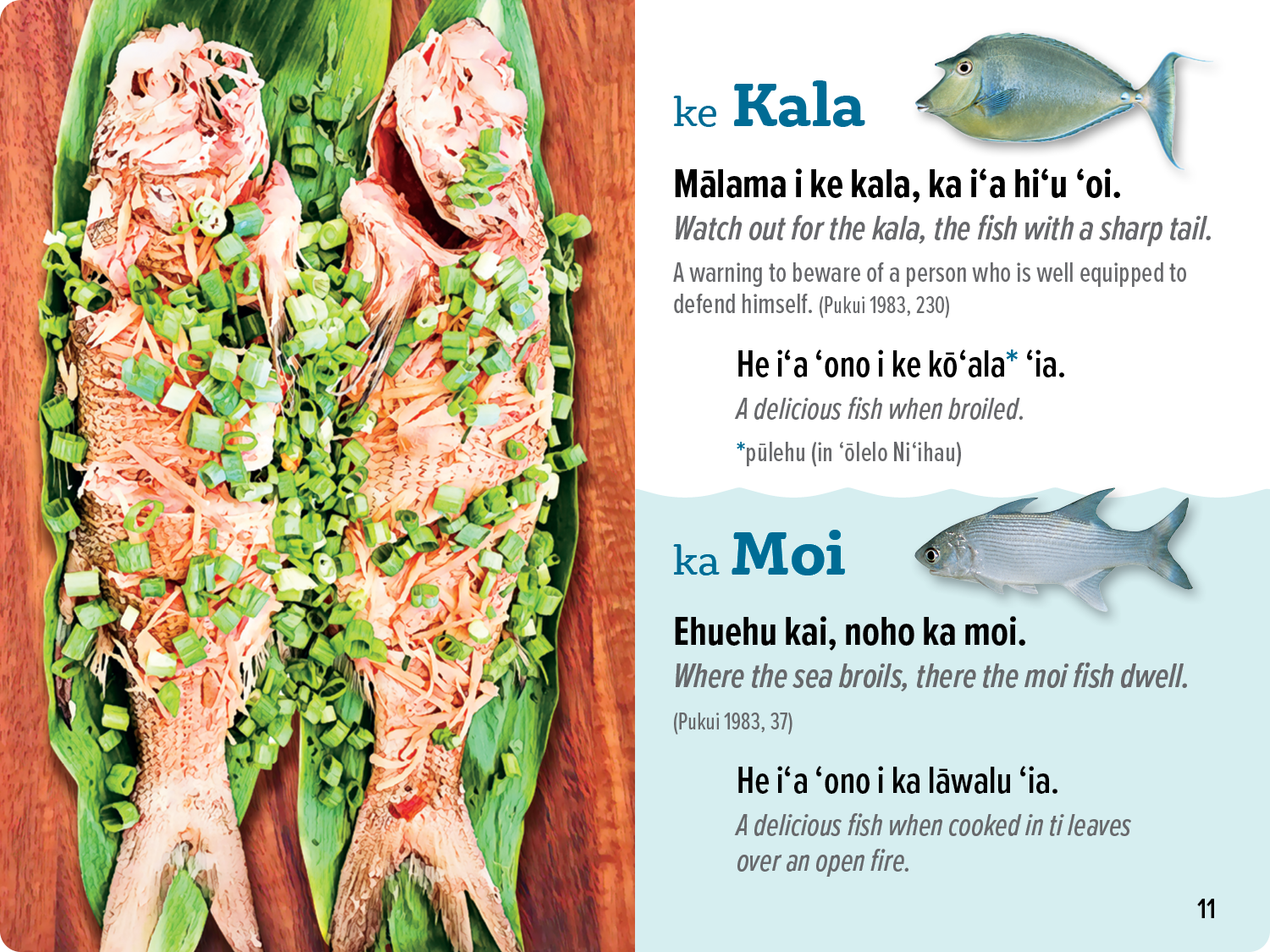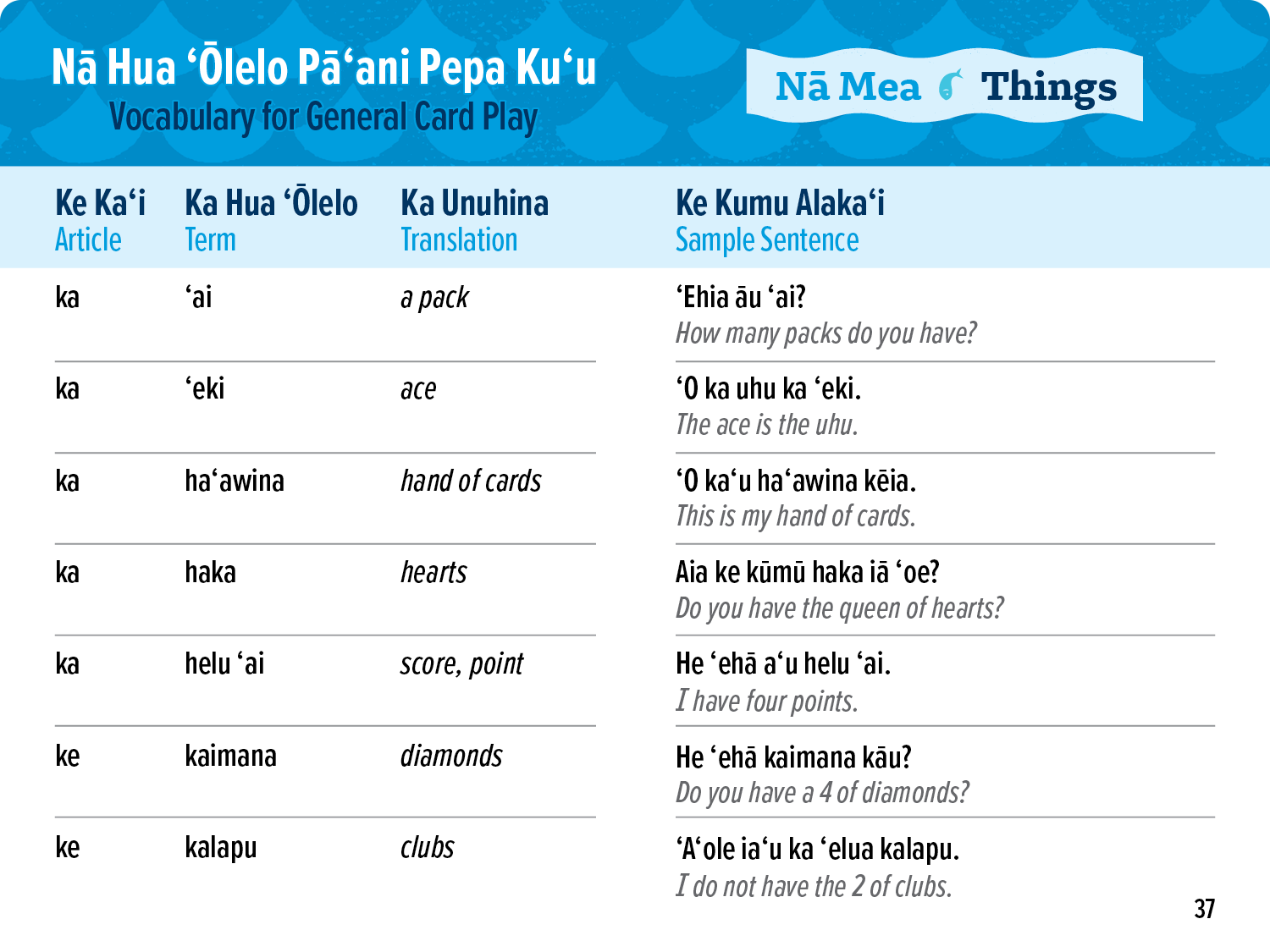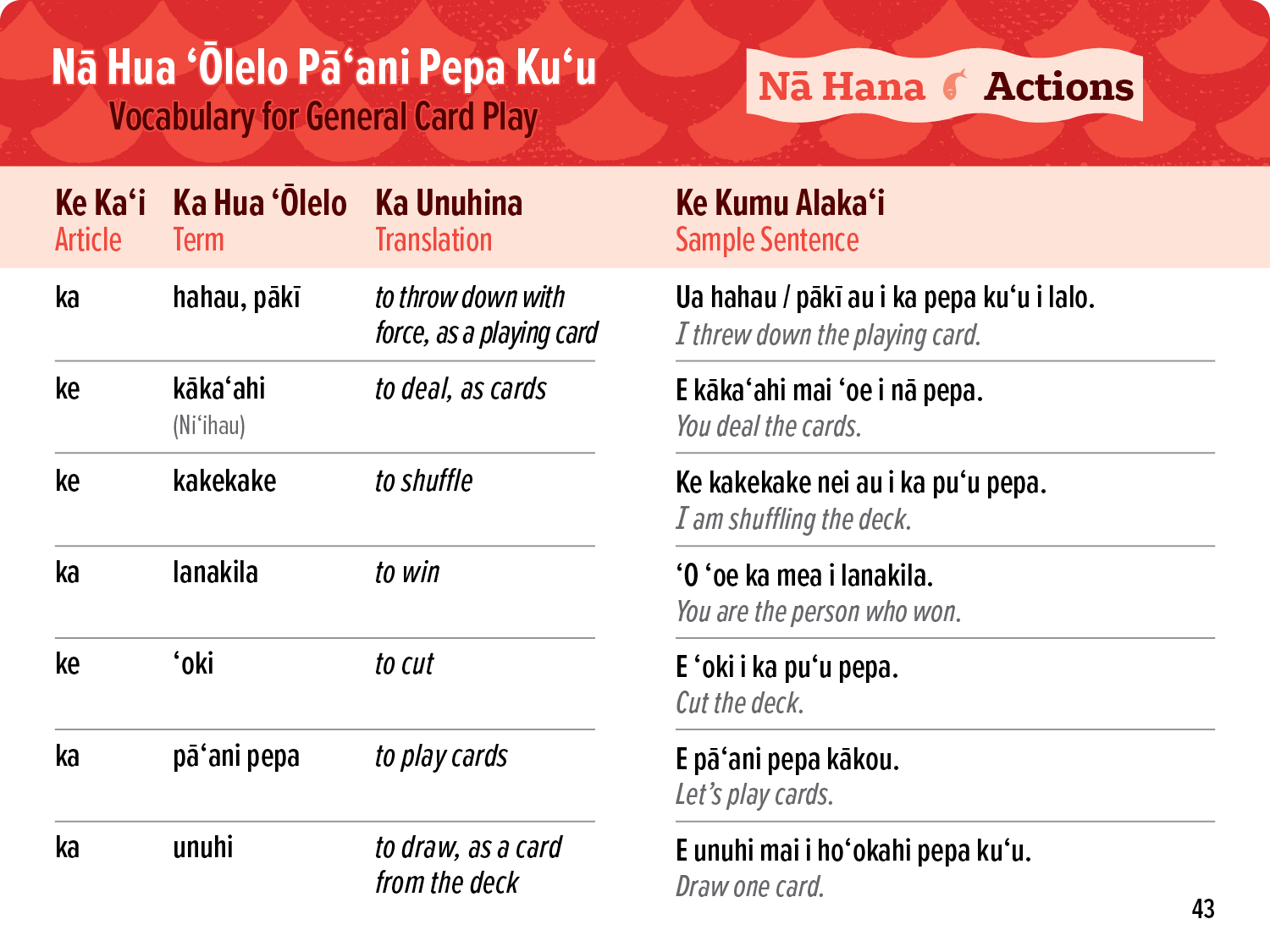HE MANA ʻŌLELO HAWAIʻI KO LOKO
HE MANA ʻŌLELO HAWAIʻI KO LOKO

Nā ʻOno o Ke Kai means “the delicacies of the sea”—a reference to the delicious Native fish of Hawai‘i. This standard deck of playing cards features thirteen iʻa commonly found near reefs that were essential to Kānaka in traditional times and continue to play a significant dietary and cultural role in Hawaiʻi today.
Nā ʻOno o Ke Kai introduces a Hawaiian worldview on fishing and provides opportunities for haumāna ʻōlelo Hawaiʻi to practice vocabulary and basic sentence structures.
E pāʻani pepa kākou—let’s play cards!
Nā ʻOno o Ke Kai means “the delicacies of the sea”—a reference to the delicious Native fish of Hawai‘i. This standard deck of playing cards features thirteen iʻa commonly found near reefs that were essential to Kānaka in traditional times and continue to play a significant dietary and cultural role in Hawaiʻi today.
Nā ʻOno o Ke Kai introduces a Hawaiian worldview on fishing and provides opportunities for haumāna ʻōlelo Hawaiʻi to practice vocabulary and basic sentence structures.
E pāʻani pepa kākou—let’s play cards!
He Aha ko Loko?
Whatʻs Inside?
He Aha ko Loko?
Whatʻs Inside?
52 PLAYING CARDS
The cards feature Hawaiian fish, tips for making them delicious, and traditional sayings.
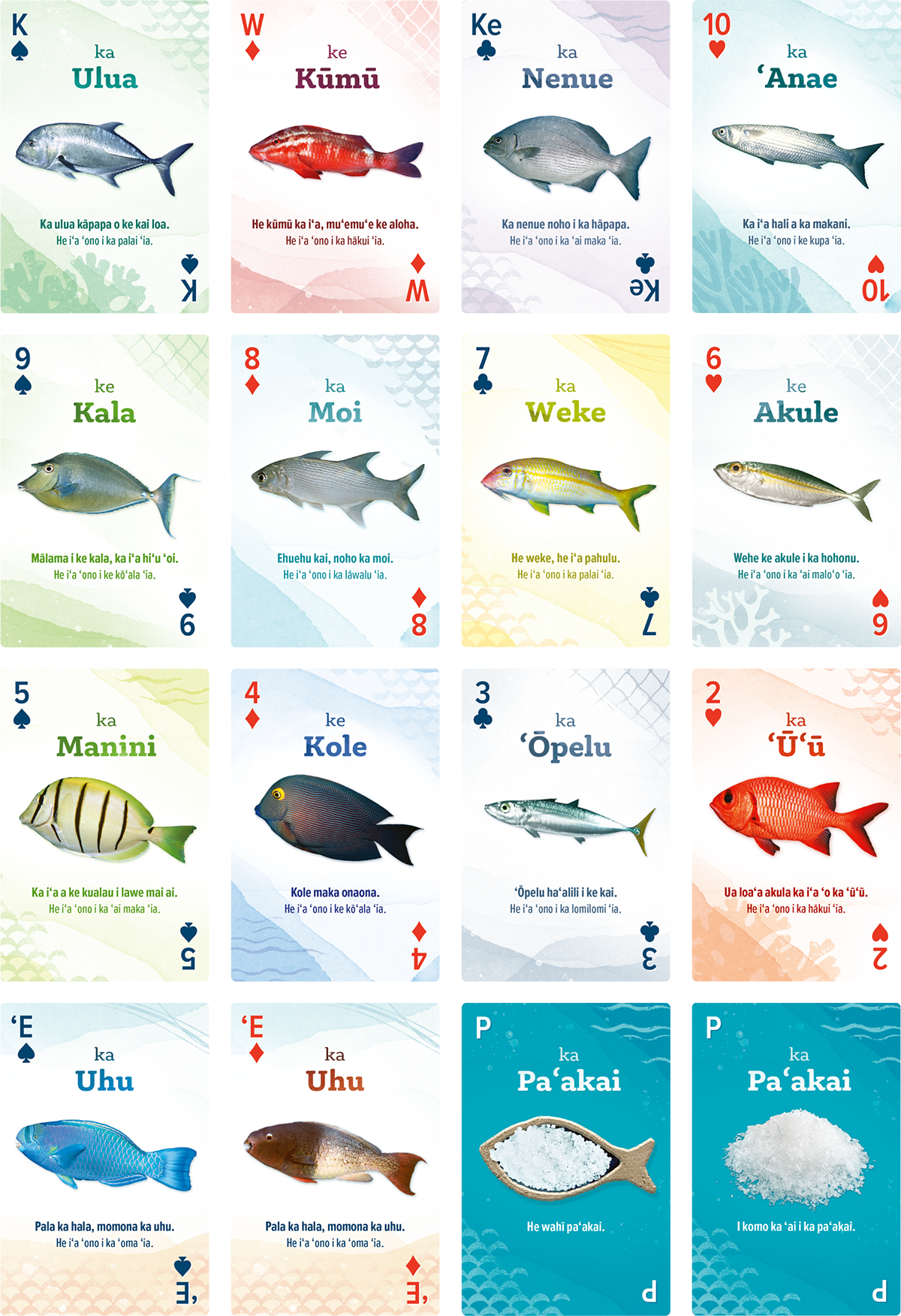
Each card includes the following elements:
- Hawaiian name of the iʻa
- Article “ke” or “ka,” meaning “the”
- Photo of the iʻa
- ʻŌlelo noʻeau, or poetic saying, that relates to the iʻa, such as its physical, behavioral, or cultural characteristics and significance
- Ideas for preparing the iʻa using our ʻohana’s favorite method—although all iʻa can be prepared and eaten in a variety of ʻono ways!
- Standard suits (♠, ♣, ♥, ♦), along with numbers and Hawaiian letters that correspond with standard face cards (for example, ʻE for ʻeki / ace, K for kini / king, W for wahine / queen)
Each card includes the following elements:
- Hawaiian name of the iʻa
- Article “ke” or “ka,” meaning “the”
- Photo of the iʻa
- ʻŌlelo noʻeau, or poetic saying, that relates to the iʻa, such as its physical, behavioral, or cultural characteristics and significance
- Ideas for preparing the iʻa using our ʻohana’s favorite method—although all iʻa can be prepared and eaten in a variety of ʻono ways!
- Standard suits (♠, ♣, ♥, ♦), along with numbers and Hawaiian letters that correspond with standard face cards (for example, ʻE for ʻeki / ace, K for kini / king, W for wahine / queen)
BOOKLETS & REFERENCE SHEETS
The game includes both bilingual and Hawaiian support materials to help you and your hoa play in ʻōlelo Hawaiʻi.
BOOKLETS & REFERENCE SHEETS
The game includes both bilingual and Hawaiian support materials to help you and your hoa play in ʻōlelo Hawaiʻi.
No ka Mea Kākau
About the Creator
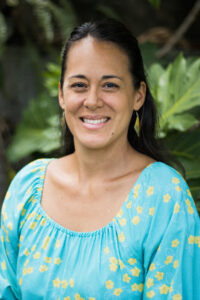
Maya L. Kawailanaokeawaiki Saffery was born and raised in Ko‘olaupoko, O‘ahu, and is an ongoing student of the language and culture of her ancestors. With a bachelor’s degree in Hawaiian language and a PhD in education from the University of Hawai‘i at Mānoa, she serves as the curriculum specialist for Kawaihuelani Center for Hawaiian Language. She is responsible for researching, developing, implementing, and evaluating curricula for use within Kawaihuelani and in the broader community. Her scholarly work focuses on kanaka–‘āina (people–land) relationships in all aspects of pedagogy, ‘Ōiwi research methodologies, and culturally grounded, interdisciplinary Hawaiian-language curriculum. She is a graduated ‘ōlapa and kumu hula from Hālau Mōhala ‘Ilima and is a leader of Kauluakalana, a community-based organization dedicated to ʻāina education and restoration in Kailua, Oʻahu. All her work is dedicated to her daughter, Hāʻalewaiakamanu Hoʻoipoikamalanai.
No ka Mea Kākau
About the Creator
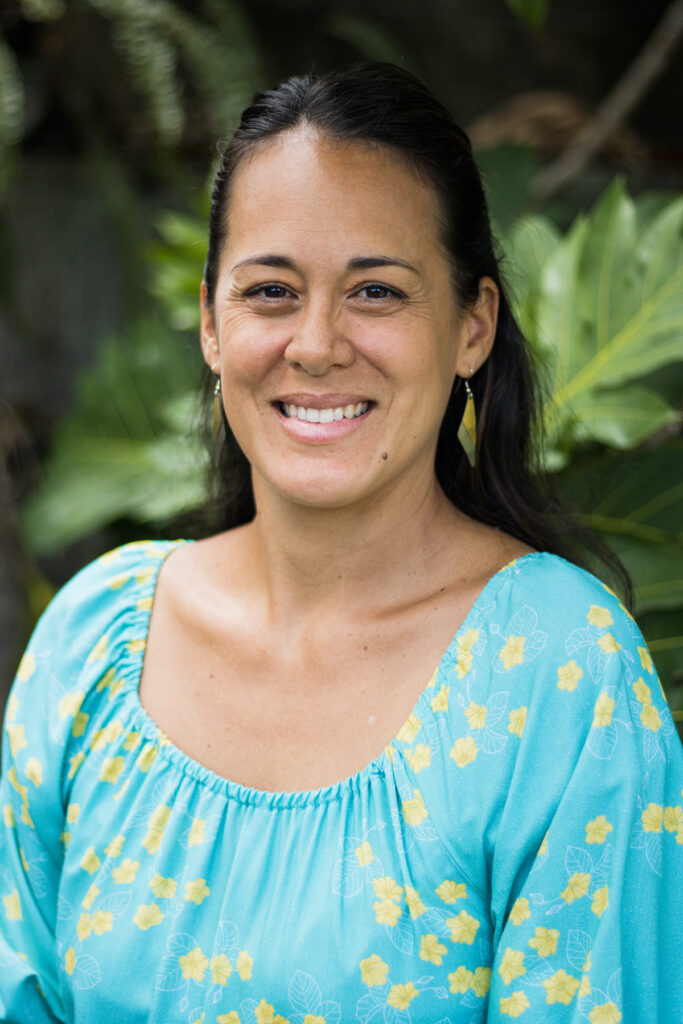
Maya L. Kawailanaokeawaiki Saffery was born and raised in Ko‘olaupoko, O‘ahu, and is an ongoing student of the language and culture of her ancestors. With a bachelor’s degree in Hawaiian language and a PhD in education from the University of Hawai‘i at Mānoa, she serves as the curriculum specialist for Kawaihuelani Center for Hawaiian Language. She is responsible for researching, developing, implementing, and evaluating curricula for use within Kawaihuelani and in the broader community. Her scholarly work focuses on kanaka–‘āina (people–land) relationships in all aspects of pedagogy, ‘Ōiwi research methodologies, and culturally grounded, interdisciplinary Hawaiian-language curriculum. She is a graduated ‘ōlapa and kumu hula from Hālau Mōhala ‘Ilima and is a leader of Kauluakalana, a community-based organization dedicated to ʻāina education and restoration in Kailua, Oʻahu. All her work is dedicated to her daughter, Hāʻalewaiakamanu Hoʻoipoikamalanai.
